The first few years of growing pines from scratch can be a lot of fun. From sprouting the seeds, to making seedling cuttings, to setting the first curves of the trunk, the early years of pine development include some fun steps.
The opposite is true when working with field-grown material.
Field-grown Japanese black pine
The first step is to generate as many roots as possible. Not exactly “fun” in the traditional sense, but important as this step underlies all subsequent steps.
It can be a big transition from the field to a container. Field grown trees are often planted in pure pumice to avoid keeping the soil too moist.
Pine planted in pumice
While the tree is producing new roots, I tend to water the soil infrequently but provide overhead water to the foliage at least once or twice a day.
I take a similar approach with fertilizer, sprinkling the foliage with fish emulsion but holding off on dry fertilizer until the needles have fully developed – a good sign that new roots are growing.
In the meantime, I watch the foliage carefully to gauge the tree’s progress. I do this by checking for insects and removing brown needles when they appear so I can monitor the rate at which old needles die off.
The foliage on this pine looks pretty good. Apart from some sunburned needles, my main concern is that the new needles are developing slowly – not surprising considering that we’ve been having a cool spring.
Healthy foliage
Sunburned foliage
Despite the size of the tree and the container, the bonsai will likely reach no more than 11″ fully styled. Here’s a close-up of the lower part of the trunk.
The main section of the trunk
The big question at this point is how many years will pass before it’s time to work on the tree. I plan to repot towards the end of this year if the tree grows well. If, however, the new needles stay short or I see other signs that the tree is progressing slowly, I may wait a second year before repotting to avoid slowing the tree down. The initial branch selection or styling can begin once the tree is healthy and growing vigorously.
Subscribe to Bonsai Tonight
New Posts Delivered Every Tuesday and Friday
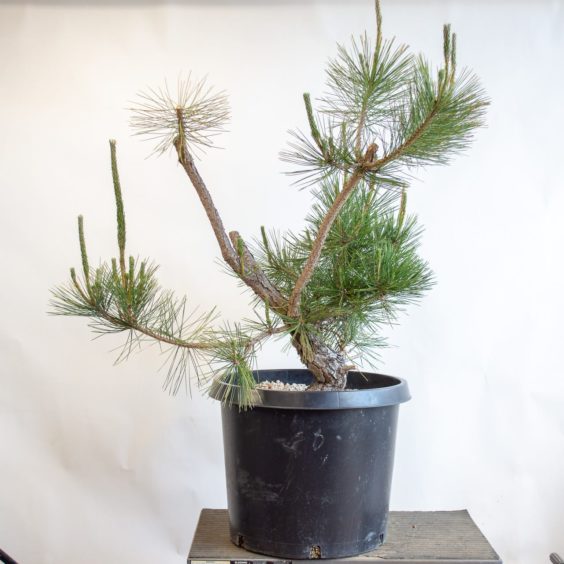
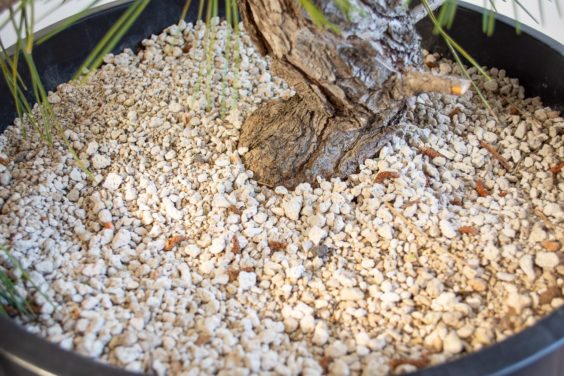
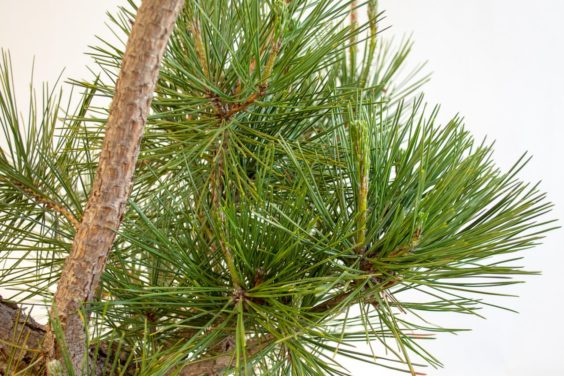
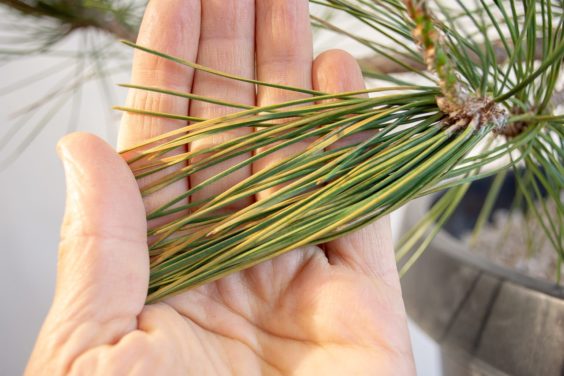
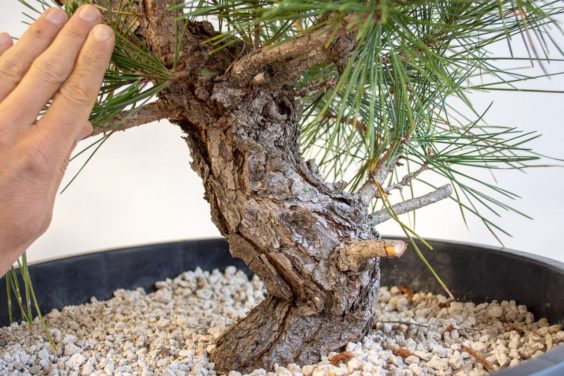
Charlie Mosse says
I have an interesting situation with my pines, and apparently I am not alone. To start, I live about 15 miles from the coast in So Cal similar to San Jose. I do not have a lot of pines and only 2+ years growing bonsai JBPs.
Several of the trees have been blessed with needle cast from the start of my getting into Pines. I treat for needle cast when the candles start growing using copper or Daconil or Agri Fos. I have just started using Agri Fos for its fungicidal action to supplement the treatments with copper or Daconil. I do alternate. I spray when there has been rain or heavy dew (not often) keeping the foliage wet longer than 4 hours.
I also have been foliar feeding my re-potted trees regardless of age with very dilute fish or MiracleGrow at 1/8 tsp per quart with 1/8 tsp of kelp liquid every 1-2 times/week. I drench them to where liquid is running into the soil but in the morning only to allow for good drying, especially on overcast days.
Questions: Does the foliar feeding of needle cast infected trees help or exascerbate?
Does foliar feeding help much with rooted trees or is it better to just go with soil applications?
Your pines always look so good, so your comments and suggestions will be greatly appreciated. BTW, the pine I got from your workshop at the shohin seminar looks very good.
Jonas Dupuich says
Sorry to hear the needle cast problems persist! My understanding is that foliar feeding is beneficial whether or not there are lots of roots. That said, I’d avoid foliar feeding until the cast is under control and switch to fertilizer the tree can take up via the roots.
Now (just before decandling) and just after decandling are great times to spray for fungus like needle cast. It might also be worth considering a systemic treatment that will make it harder for the fungus to take hold between surface applications.
Charlie Mosse says
Makes sense. Will follow it carefully. Thanks for the info.
Dan Carrier says
Watering is my weakness! How much, how often et ?
Jonas Dupuich says
Good question Dan – here are some starting points: https://bonsaitonight.com/tag/watering/